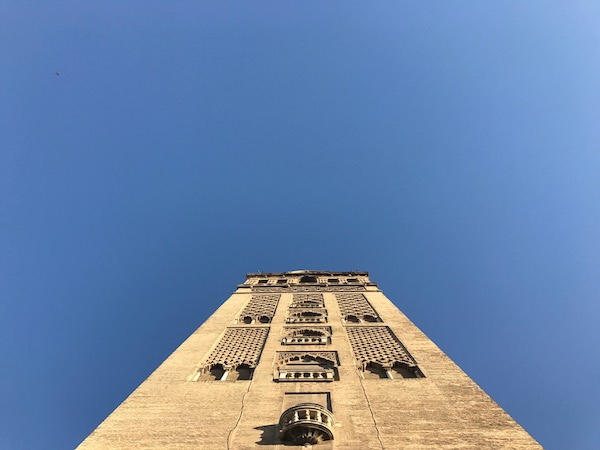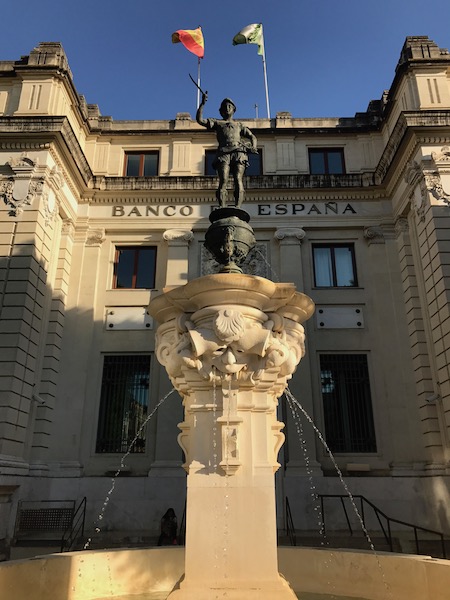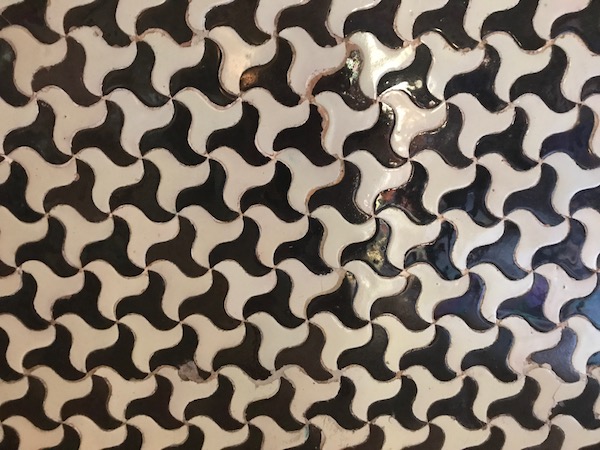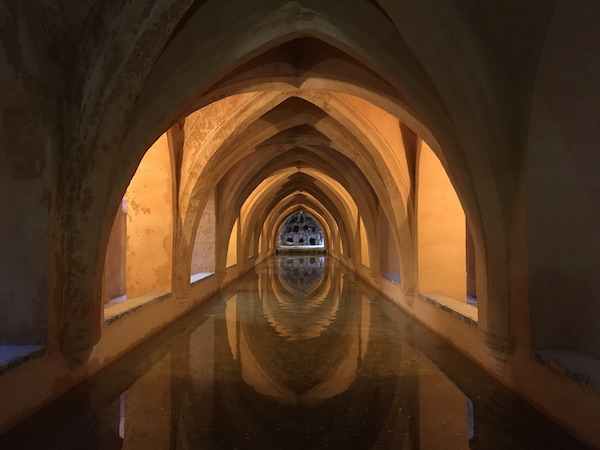Seville, Spain is also known as Sevilla, España. My visit, during one of the hottest parts of the year, left me with beautiful pictures and sweaty clothes.

The tower of the Cathedral was first built by the Moores during their occupation. That clear blue sky left a deep sunburn.
After a great night’s sleep, it was time to explore Seville, which is universally acknowledged as one of Europe’s hottest places.
I have wanted to visit Seville for several years because of its importance to the New World. Seville was where Columbus received permission for his voyage in 1492. In fact, nearly every Spanish journey to the New World began here. It was also the ultimate destination for nearly all of the silver that came from the mine at Potosí in Bolivia.
Much of those riches were used to build lavish buildings in this city.
This place is absolutely stunning. There’s a new wonderful building at every turn.
Real Alcázar de Sevilla
We visited the Real Alcázar de Sevilla (the Royal Palaces) where we saw, among many other wonder, the room where Christopher Columbus received permission from Isabella and Ferdinand to sail the ocean blue back in 1492. We also saw the spot where Magellan received his orders to sail around the planet (He would not survive the journey, only 18 of his sailors would return).
But more stunning than any story were the tiles and other decorations in this palace. It is truly unbelievable. Scroll through for some pictures…

Unbelievable ceiling in the Royal Palace. For perspective, those are second-floor balconies on the side.
The General Archives of the Indies
Even more impressive than the Royal Palaces (for me, at least) was seeing The General Archives of the Indies.
If you’ve been following the blog for any period of time, you probably know I’m fascinated by the ancient cultures of Central and, especially, South America. The whole reason I decided to visit Seville, in fact, was because it served as the final processing point for much of the silver discovered in South America. When I visited Potosà in Bolivia, I told myself I wanted to see the place where most of the silver that came from that mountain wound up. So, here I am.
The building that once served as the spot where merchants and conquistadors planned their journeys across the Atlantic is today a beautiful example of the typical architecture for the city. The building, which is just beside the Royal Palace where those journeys were commissioned, is now the General Archives of the Indies.
It’s home to the records of these and so many more journeys. It’s a researcher’s dream. With enough records to stretch many, many miles, it is referred to by the Spanish as The Memory of the New World. Within its walls can be found Columbus’s journals and the original Treaty of Tordesillas, which divided the world between Spain and Portugal.
This place also reveals just how evident biases can be.
In many circles in South America, men like Pizzaro and de Gama are considered genocidal maniacs. In the General Archives of the Indies, they’re lauded as heroes.
Fortunately, the archives are today a central location for modern researchers to gain a better and more balanced perspective on the past.
It’s a stunningly beautiful building that brings into perspective the very beginnings of the unbelievable complexities of our interconnected world.
Next up? Gibraltar, where I’m sure more wonders await!







